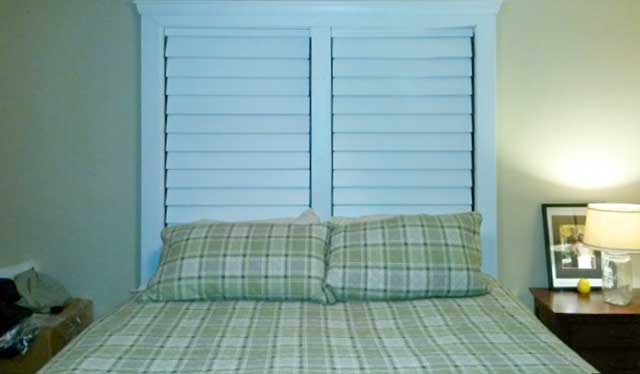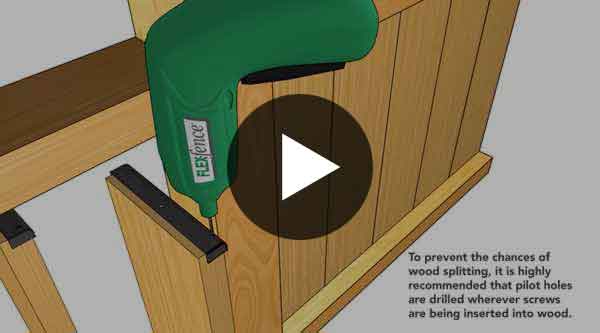Louver Doors
Functional Benefits of a Louver Door: Privacy, Sun Protection, Ventilation, Noise and Dust Control

Fully open, it lets light stream in, and allows you to easily see what’s on the other side of the door, and it divides small spaces so they feel less stuffy.
Halfway- or fully-closed louvers can provide a privacy or sun barrier that’s as good as a solid door while still allowing air to circulate. This makes them the perfect choice for laundry rooms, bathrooms, closets and pantries, where moisture, mould and mildew are unwelcome visitors. But they also help in under-stairs areas where you might store suitcases and in garages where paints, lawn chemicals, building materials and tools reside. And while noise can still slip through the slats, the significantly quieter sound will be a sanity saver when it comes to a louver door that’s stationed between you and a pool pump room.
A louver door is easy to keep clean; just use a readily available fluffy microfibre brush or duster.
Add a Louver Door for Design Versatility
Before we get to the fun stuff, let’s talk about the functional benefits of a louver door. Because you can adjust the blades just as you would in a louvered roof, wall or awning, a louver door offers precise control over privacy, light and ventilation within your home.
Fully open, it lets light stream in, and allows you to easily see what’s on the other side of the door, and it divides small spaces so they feel less stuffy.
Halfway- or fully-closed louvers can provide a privacy or sun barrier that’s as good as a solid door while still allowing air to circulate. This makes them the perfect choice for laundry rooms, bathrooms, closets and pantries, where moisture, mould and mildew are unwelcome visitors. But they also help in under-stairs areas where you might store suitcases and in garages where paints, lawn chemicals, building materials and tools reside. And while noise can still slip through the slats, the significantly quieter sound will be a sanity saver when it comes to a louver door that’s stationed between you and a pool pump room.
A louver door is easy to keep clean; just use a readily available fluffy microfibre brush or duster.
Deciding on Louver Door Dimensions
Our FLEXfence Louver Hardware is available in a 4-foot standard kit or custom lengths to a maximum of 8 feet and can be easily cut and sized to meet your needs. Each FLEXfence Kit includes an operating bar that allows you to adjust your door louvers, all fastening hardware, rails and brackets, plus easy-to-follow assembly instructions.
Choosing Materials
Since you’ll be focusing on indoor applications, you’re not restricted to insect- or rot-resistant types like Redwood or Cedar.
While all wood contains knots, they are less distracting in some species than others. If you’re looking for less knots and a more refined look, you can drop anything from Alder, Ash, Basswood, Beech, Birch, Cherry and Cypress to Mahogany, Maple, Oak, Poplar, Teak and Walnut into our louver hardware. Or go totally tropical with a louver door made from laminated Bamboo.
For more rustic designs or to achieve a knotty cottage or cabin feel, opt for frames and blades made from Pine or Hickory.
Sealing, Shellacking, Staining and Painting a Louver Door
No matter what wood you choose, if it’s located near a window, you’ll need to protect your louver door from bleaching and re-apply varnish or paint periodically.
.
A Note About Colour
We chose a black colour for our FLEXfence Louver Door Kits, as it has better UV properties. If you want to paint our hardware to match your designs, you’re welcome to do so; just make sure you use plastic-compatible paint.
Deciding Between DIY or Contractor-Installed Privacy Gates
If you’d rather leave the design and construction to a professional, you can direct your carpenter or contractor to the Dimension Guide and Calculator tools on our website, so they can better estimate the materials you’ll need and price out your work accordingly.
Where to Buy Your FLEXfence Louver Door Kit
Ready to Dive into Your Louver Door Project?
And remember, if you’re uncomfortable installing a louvered door or other structure on your own, you can always hire an experienced carpenter or contractor to build it for you utilizing our FLEXfence Louver Door Kit.
FAQs About Louvered Privacy Gates
When constructing my louver door for indoor use, what is the recommended max span for the slats?
Can I paint various parts of the FLEXfence Louver System?
Has the FLEXfence Louver System been performance tested?
We select only the highest-grade materials and adhere to manufacturing best practices to ensure our FLEXfence Louver System hardware kits are strong and durable for both indoor and outdoor usage.

